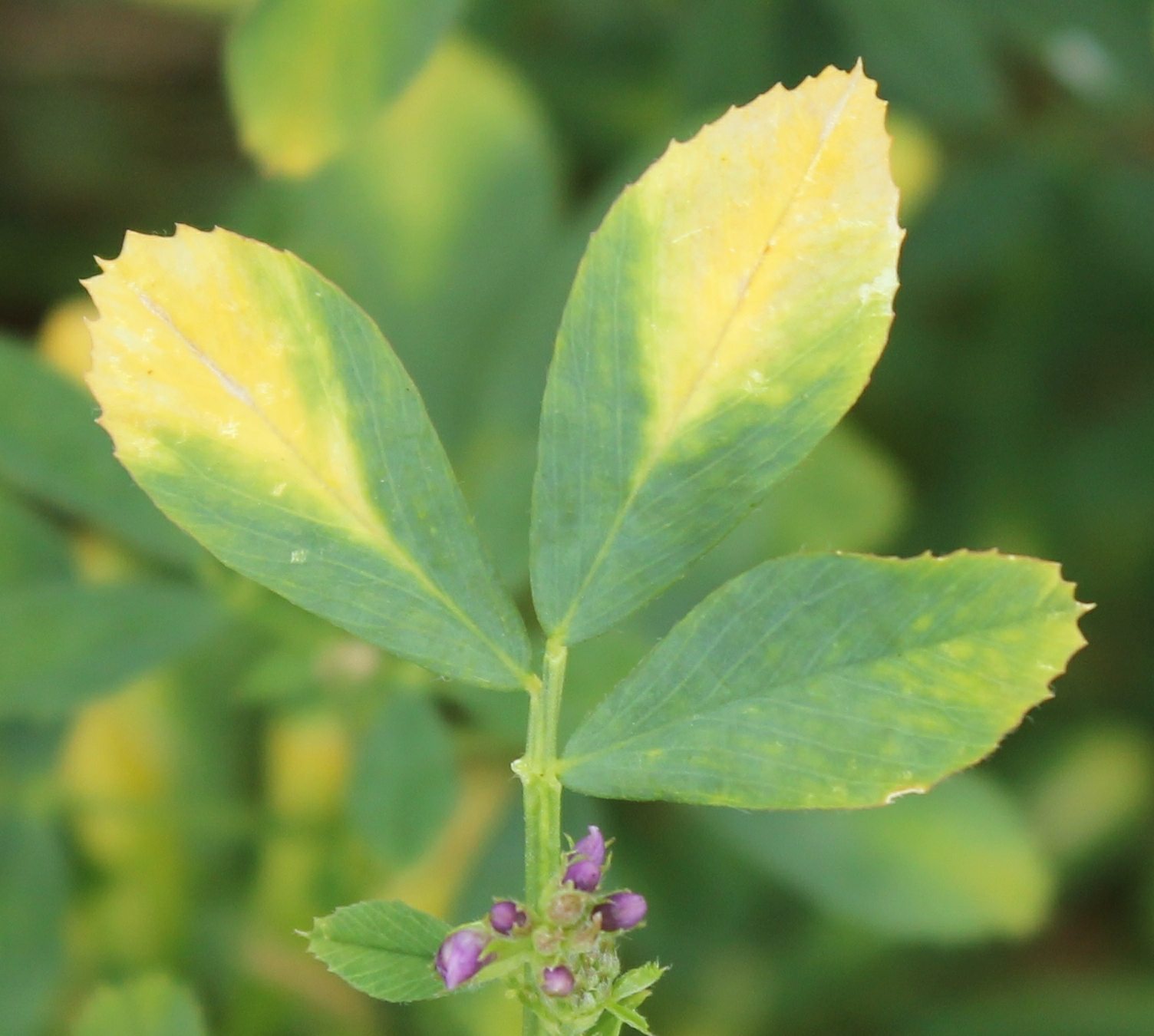
The smell of mowed alfalfa is one of my favorite things as I drive around the countryside this time of year. Also, I especially like seeing the alfalfa going through a chopper or round baler rather than the small square baler like when I was younger. A couple of things to consider with your alfalfa during the summer are fertilization and insect management. There are several important nutrients that we don’t need to worry too much about when it comes to alfalfa. Most of our soils have optimum to high levels of calcium and magnesium and these two nutrients are added to the soil through periodic applications of Aglime. Small amounts of nitrogen (25-30 lb/ac) can be beneficial during alfalfa establishment on sandy or low organic matter soils but overall, alfalfa doesn’t require nitrogen fertilization because of nitrogen fixation.
The main nutrients that we need to manage are phosphorous (P), potassium (K), sulfur, and boron. Applying phosphorous prior to establishment would be beneficial since it is immobile in soil and is important to root growth of seedling alfalfa. Phosphorous can be topdressed in subsequent years depending on soil tests and crop need. Potassium is arguably the most important nutrient because it contributes to standability, disease resistance, winter hardiness, and it is a significant contributor to yield. Sulfur is necessary for protein synthesis and is taken up by plants as sulfate. Applications of sulfate containing fertilizers such as ammonium sulfate (AMS) provides sulfur that is immediately available but sulfate will leach from the rooting zone. Elemental sulfur can also be applied to alfalfa but it takes time for it to convert to the sulfate form of sulfur. Either way because of its mobility in the soil, sulfur applications should be made annually. Boron is important for cell creation and pollination and like sulfate, it is mobile in the soil but it should be noted that boron is harmful to actively growing seeds so applications of boron should wait until after alfalfa establishment.
Amount of fertilizer removal from alfalfa is most often measured in pounds of fertilizer per tons of dry matter removal. One ton of alfalfa dry matter per acre removes 30 pounds of DAP (18-46-0), 100 pounds of potash (0-0-60), 6 pounds of sulfur, and 0.08 pounds of boron. Creating a fertilizer plan is then pretty simple if you combine your yield and fertilizer removal with soil test data and manure applications.
The other point I would like to make with this article is now that we are in early June, we’ll start to see the emergence of the Potato Leafhopper. Leafhoppers cannot survive in our winters; instead, they are pushed into the Midwest by storms from the Gulf Coast. Dry weather and temperatures around 86°F are the conditions conducive for rapid growth of leafhopper populations. You will not see leaf defoliation from leafhoppers because they pierce alfalfa leaves and suck out the plant sap causing yellowing on the leaf tips. Excessive feeding will result in stunted plants and reduced yield. There are numerous foliar insecticides that are effective on leafhoppers so it is important to sweep fields that have started to regrow after a cutting to monitor the population of leafhoppers. Talk to an agronomist at WS Ag if you have questions regarding your alfalfa.
-Mark Kendall
Destruction from Potato Leafhopper Sulfur deficient alfalfa on the right

